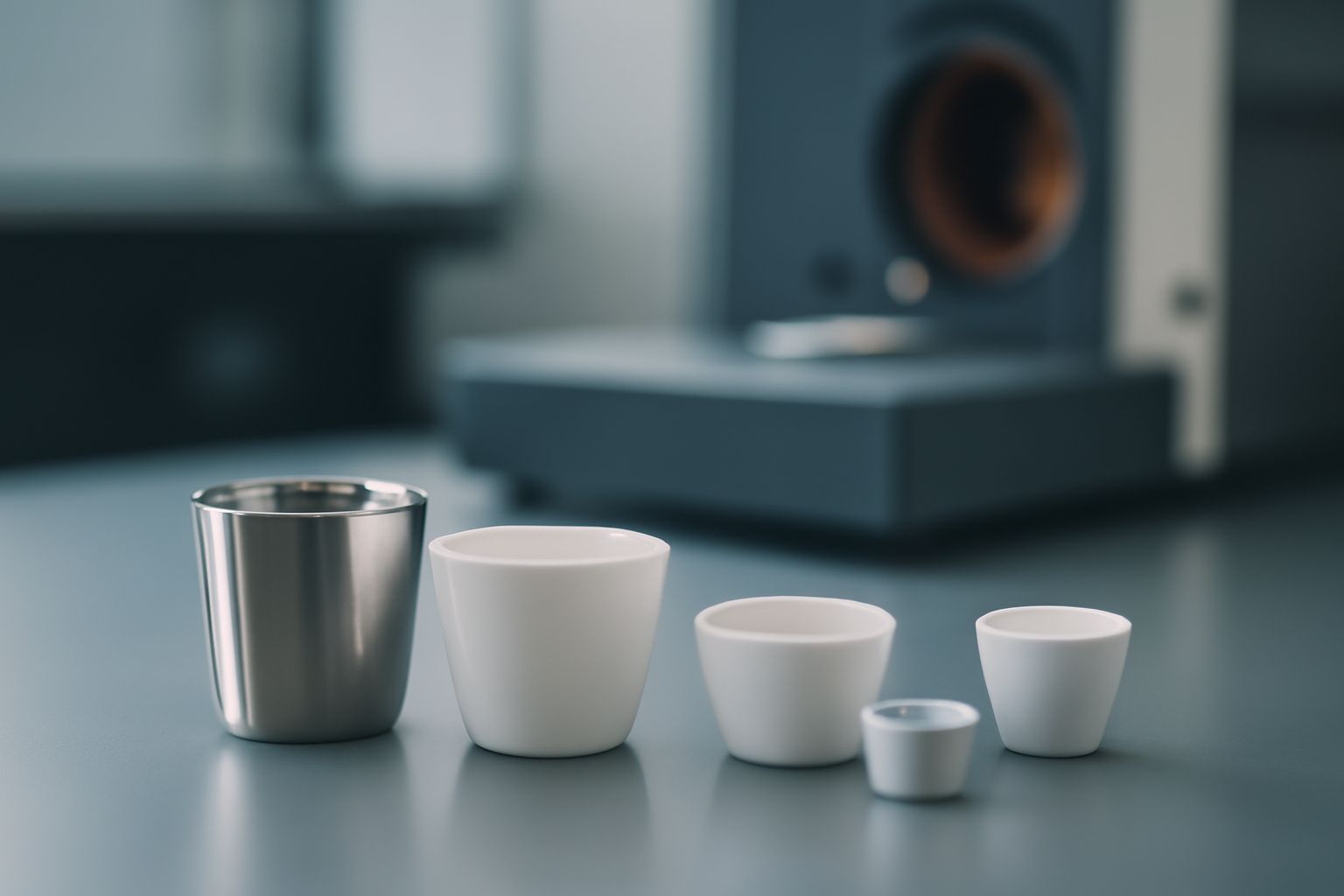Your cart is empty.
shop now
Your cart is empty.
shop now
Laboratory testing at high temperature often leads to failed results without the right crucible. Many researchers waste time and money due to wrong equipment choices.
Select high-temperature analysis crucibles that are compatible with your test method, instrument, and temperature needs to ensure safe and stable sample evaluation in your laboratory.

I have run hundreds of thermal tests and learned the value of matching the right crucible to my lab’s work. Getting this step right helps me avoid mistakes and deliver clear, repeatable results. Let me explain what you should check before buying high-temperature crucibles for your lab.
Buying the wrong crucible causes failed TGA or DSC results and damages equipment. This can delay projects and raise costs for every experiment.
Check temperature range, chemical stability, and compatibility with your thermal analyzer before purchasing crucibles for TGA or DSC work.
I always review the instrument model, expected temperature, and sample type first. Crucibles for TGA and DSC must handle both heat and chemical exposure. Many brands list the peak temperatures and suggested applications for each crucible type. Testing with a mismatched pan can ruin sensitive sensors or lead to sample contamination.
| Factor | Why it Matters | Action | Reference |
|---|---|---|---|
| Max Operating Temperature | Avoids softening or melting at test temp | Match with method’s max temp | TGA: up to 1600°C, DSC: up to 650°C |
| Chemical Stability | Prevents unwanted sample reaction | Check with sample type | ScienceDirect |
| Instrument Fit | Ensures sensor accuracy, safety | Check model compatibility | Manufacturer’s datasheet |
Using compatible crucibles prevents costly damage and protects your investment in laboratory instruments.
Crucibles made from poor materials break down early, causing lost data and test failures at high temps. This problem is common in labs using generic pans.
Platinum and alumina are top materials for high-temperature crucibles due to their high durability and resistance to heat and chemical attack.
My own experiments show platinum crucibles work best above 1000°C when high purity and repeat use are key. Alumina is almost as strong but less costly, so many labs use it for routine work. I never risk using steel or glass above their safe limits. Below is a breakdown of material performance:
| Material | Max Temp (°C) | Chemical Stability | Main Use | Reference |
|---|---|---|---|---|
| Platinum | 1600 | Excellent | Repeated, precise tests | Lenntech |
| Alumina | 1650 | Very Good | Common high-temp analysis | AZoM |
| Silica | 1100 | Good | Low-mid temperature, specialty | AZoM |
| Steel | 800 | Poor above 700°C | Not recommended for TGA/DSC | N/A |
When picking a crucible, I always look past price alone and focus on proven material strength and history.
A mismatched crucible can cause bad data or permanent device damage, especially in precision thermal analysis.
Check both model number and instrument brand, and always verify fit and calibration with your supplier before purchasing crucibles.
Before I order crucibles, I compare their exact dimensions with my TGA or DSC instrument. Manufacturers post compatibility lists showing which pans work with each model. Some even provide a reference material for calibration training. Below is a quick match-up guide:
| Instrument Brand | Common Models | Crucible Compatibility | Guide Link |
|---|---|---|---|
| TA Instruments | Discovery, Q Series | Platinum, alumina, sealed pans | TA Instruments Consumables |
| NETZSCH | STA, DSC 404, TGA 209 | Sealed alumina, ceramic crucibles | NETZSCH Consumables |
| Mettler Toledo | STAR System | Alumina, platinum pans | Mettler Toledo Consumables |
Confirming compatibility up front helps avoid costly returns or time lost during urgent experiments.
Standard crucibles often do not meet special test needs, leading to test delays and wasted samples.
Custom crucibles let you match unique sample sizes, rare materials, or advanced tests, improving test accuracy and lab efficiency.
I have ordered custom crucibles to fit rare instrument setups or new sample types. Custom designs help reach next-level accuracy for research projects. Each order should start with a measured drawing and the test protocol. Here’s how custom and standard options stack up:
| Aspect | Standard Crucible | Custom Crucible | Extra Benefit |
|---|---|---|---|
| Fit to Device | Only matches certain brands | Built to user spec | Customization improves accuracy |
| Material Choice | Limited | Wide, including rare metals | Adapts to rare chemical tests |
| Order Volume | Bulk, fixed packs | Small or single pieces | Cost control for special projects |
Sometimes customization is not just a luxury but a real need for cutting-edge research. More info: ScienceDirect - Customization in Laboratory Consumables
The best high-temperature crucible will fit your analysis type, match your instrument, and offer material quality you can trust for each experiment.
Contact REDTHERMO Technical SupportTechnical support email: